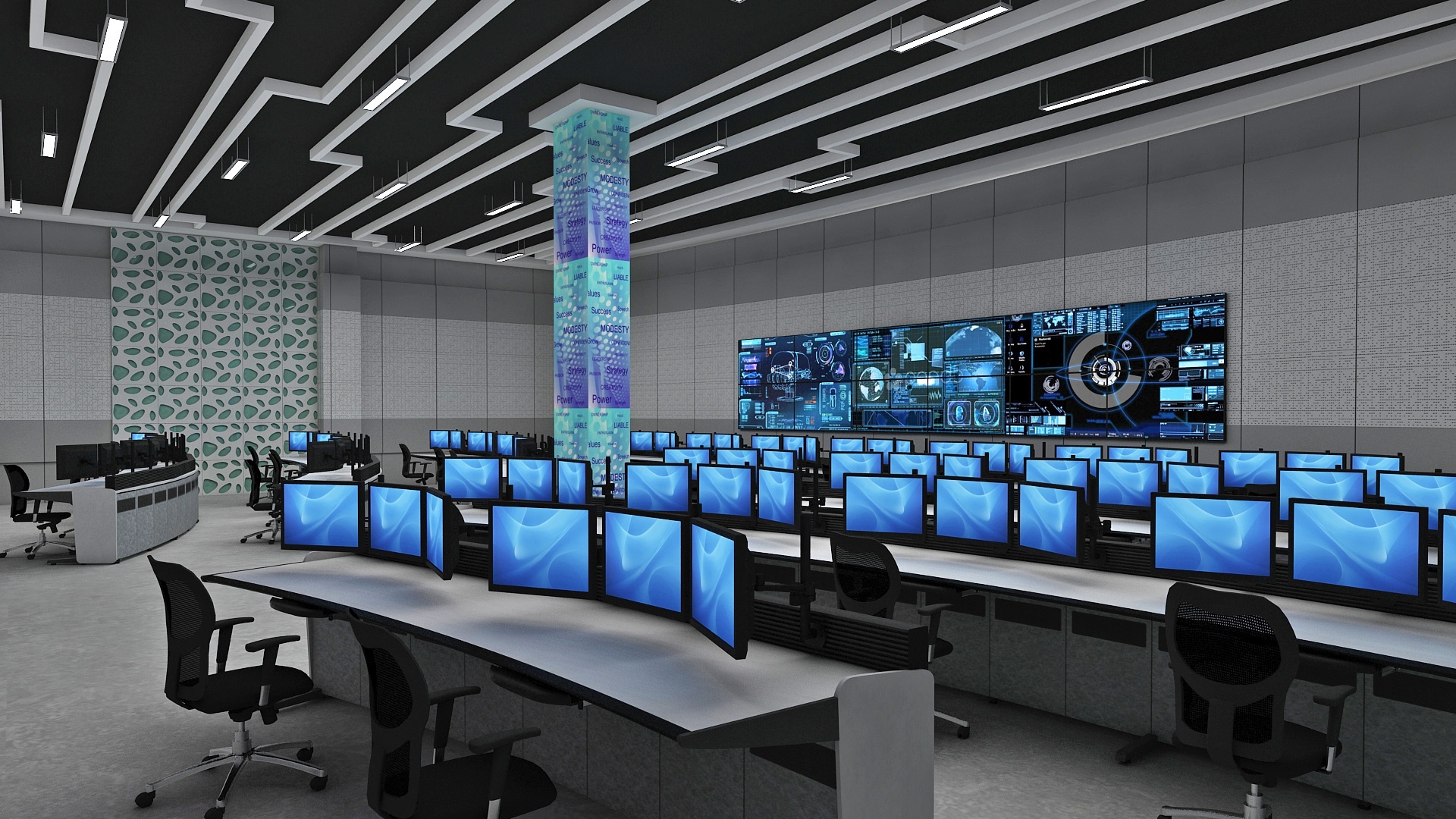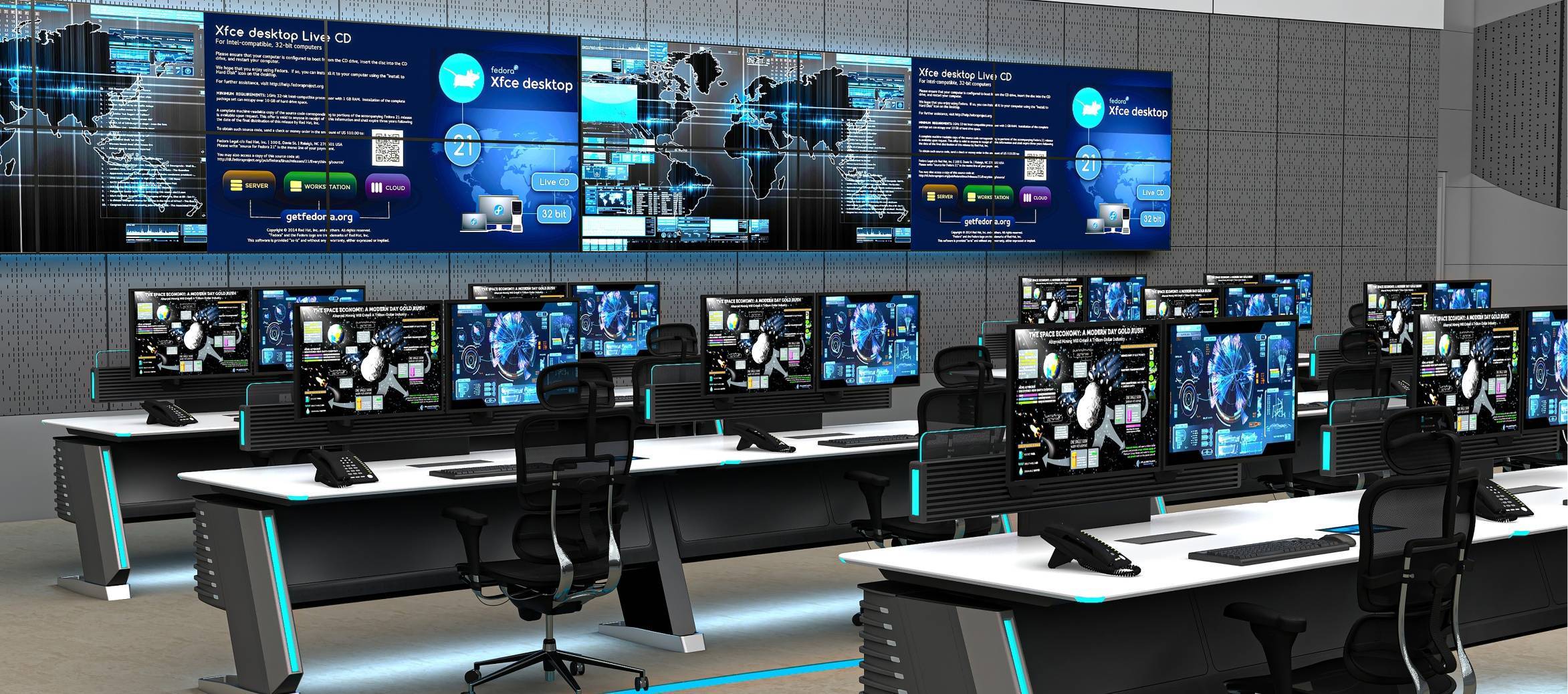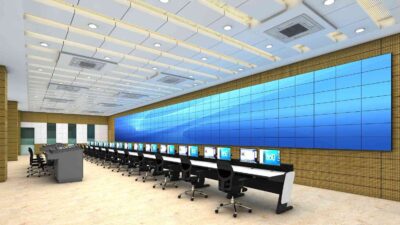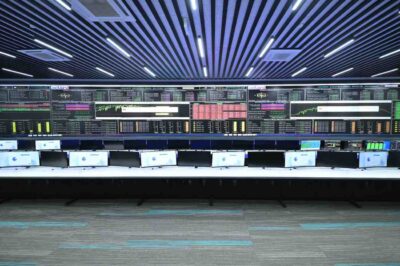
A Guide to Surveillance Room Design for Enhanced Security
Security operations centers are essential for handling emergency responses, protecting critical assets, and tracking activities in real time. A well-designed security command center is essential for operational effectiveness and smooth monitoring. The command center’s architecture greatly impacts how well it functions and how users interact with it, whether it is a public infrastructure project, an industrial plant, or a commercial facility.
Understanding the Purpose of a Security Command Center
A security command center is a centralized hub where operators manage surveillance systems, monitor live feeds, and coordinate responses. These spaces are integral to industries like oil and gas, power plants, aviation, and smart city projects, which demand round-the-clock vigilance. The efficiency of such setups depends on the thoughtful arrangement of equipment, adherence to control room design standards, and ergonomic considerations for operators.
Understanding the Purpose of a Security Command Center
A security command center is a centralized hub where operators manage surveillance systems, monitor live feeds, and coordinate responses. These spaces are integral to industries like oil and gas, power plants, aviation, and smart city projects, which demand round-the-clock vigilance. The efficiency of such setups depends on the thoughtful arrangement of equipment, adherence to control room design standards, and ergonomic considerations for operators.
1. Layout and Space Efficiency
The layout of a security operations center design should prioritize accessibility and usability. Every workstation should have an unobstructed view of the video wall and monitoring devices. A well-thought-out arrangement minimizes movement and guarantees that operators can react quickly in emergency situations.
2. Ergonomics in Design
Command center design emphasizes the comfort and productivity of operators who often work long hours. Adjustable desks, ergonomic chairs, and strategically positioned monitors reduce physical strain and improve focus. These design elements enhance operational accuracy and reduce fatigue-related errors.
3. Surveillance Room Equipment
For effective monitoring, the proper surveillance room equipment must be selected. The core of a modern monitoring room includes reliable data storage options, sophisticated communication systems, and high-resolution video walls. The incorporation of acoustic treatments and dynamic lighting guarantees a setting that supports efficient decision-making.
Control Room Design Standards: A Benchmark for Excellence
Adhering to recognized control room design standards is essential to maintaining the functionality and longevity of a security command center. By guiding layout, measurements, and environmental controls, standards such as ISO 11064 make the field both industry-compliant and user-friendly. Additionally, these standards make it easier for firms to measure and accommodate new technological developments.
Industries Benefiting from Advanced Surveillance Room Designs
Surveillance room designs are tailored to meet the unique demands of industries such as steel, cement, marine, and aviation. In smart cities, these rooms provide centralized control for traffic management and emergency responses, while in oil and gas facilities, they ensure safe and efficient operations in high-stakes environments.
Steps to Plan a Command Center Setup
- Needs Assessment: To begin, determine the main goals of the surveillance room. Examine the expected workload, the kind of systems to be monitored, and the number of operators.
- Space Planning: Pick a site with features for network connectivity, ventilation, and power supply to ensure continuous operations. Give workstations, video walls, and auxiliary systems enough room.
- Technology Integration: Include solutions like video management software, AI-driven analytics, and emergency communication tools. These technologies simplify replies and allow for proactive threat detection.
- Operator Training: Provisions for operator training are a necessary part of any successful command center design. Operational efficiency and response time are improved by familiarity with the equipment and layout.
Sustainable Design Practices
Sustainability is becoming a key focus in command centre setups. Energy-efficient lighting, eco-friendly materials and waste management practices are in line with global environmental standards. These measures not only reduce the carbon footprint but also ensure long-term cost savings.
FAQs
- What is the purpose of a security command center?
A security command center is a centralized hub for monitoring surveillance systems, managing emergency responses, and ensuring safety.
- How does ergonomics impact surveillance room design?
Ergonomics minimizes physical strain on operators, improving focus and reducing errors during prolonged monitoring sessions.
- What are control room design standards?
Control room design standards, like ISO 11064, provide guidelines for layout, dimensions, and environmental controls
- What equipment is essential for a surveillance room?
Key equipment includes video walls, communication systems, data storage solutions, and ergonomic workstations.
- Which industries benefit from surveillance room designs?
Industries like oil and gas, aviation, power plants, and smart cities rely on surveillance rooms for safety, monitoring, and operational efficiency.






No Comments